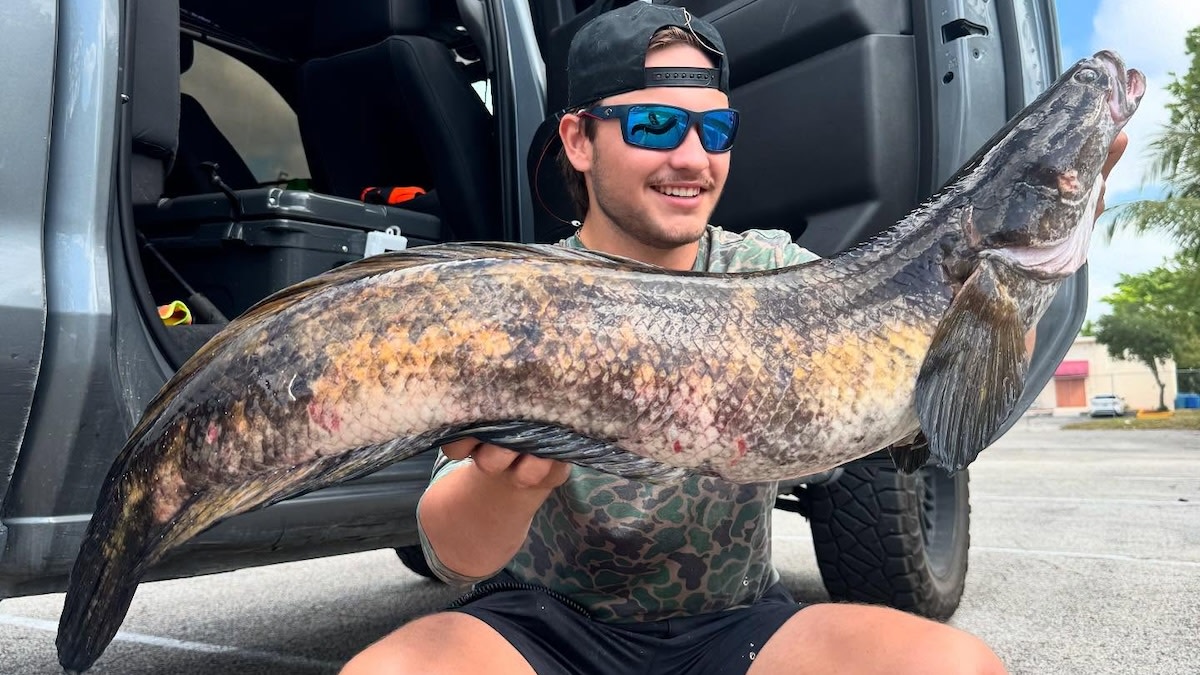
A Florida angler recently landed a whopper snakehead—and put his name in the record books. According to a Facebook post, Ryan Alvarez went fishing in South Florida’s Broward County this spring with a specific goal in mind: catching a big snakehead. He succeeded while using a Z-Man chatterbait at a canal in Pompano Beach.

“[I] went out yesterday to a spot I found that I knew had some giants,” wrote Alvarez. “[I] lost a bunch of big fish, so I went back this morning and lost another 10-plus-pound snakehead that frayed me in a broken dock…[I] almost went home after that, but I kept fishing for five more minutes and caught this absolute slob.”
Alvarez quickly brought the fish to the International Game Fish Association (IGFA) headquarters in nearby Dania Beach, where it was weighed on a certified scale. It came in at 17 pounds, 1 ounce, and was confirmed as the new all-tackle world for the great snakehead species by the IGFA. The previous world record for the species was a 15.5 pounder caught by Corey Nowakowski, according to Anglers Journal. Alvarez's giant catch also measured in at a 37.5 inches long.
Great snakehead, also known as bullseye snakehead, are one of several closely related invasive snakehead species to establish populations in North American waters. The other species of snakehead commonly found in the U.S. is the northern snakehead, which perhaps unsurprisingly, is typically found north of where Alvarez caught his great snakehead.
According to the Everglades Cooperative Invasive Species Management Area, great snakeheads are native to tropical parts of Asia. The species has a flattened head, a torsional body, and adults are characterized by a black dot highlighted by red or orange on their tail fins.

Bullseye snakeheads have varied diets. Scientists say they may compete with some native fish species but serious impacts to them have not been documented, perhaps because of great snakeheads’ general diets and ability to occupy low-oxygen waters where native species struggle. As with northern snakeheads, the species has become popular among recreational anglers for its aggressive strikes and willingness to take artificial lures.
Featured images and video via Ryan Alvarez Facebook.
Shop
Shop AllSign In or Create a Free Account
Related

Freshwater
Video: Angler Catches and Releases New World Record Paddlefish

Fishing
Florida Angler Catches Massive World Record Snakehead




Conversation